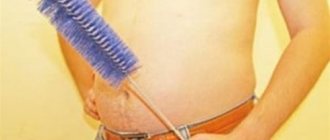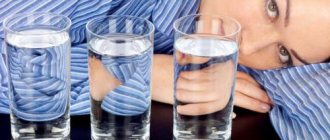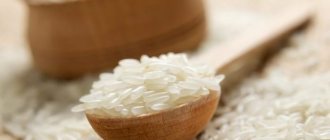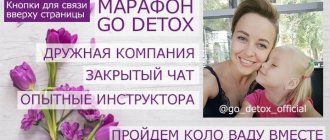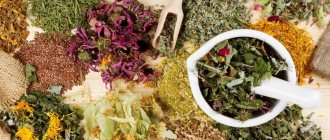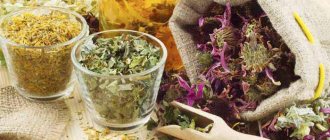The human intestines cannot completely remove food debris. The particles remain on the walls of the intestine, eventually transforming into significant accumulations - fecal stones. Cleansing the intestines with salt water will help get rid of many health problems, normalize weight, improve your mood and rejuvenate the body. Cleaning with elements of yoga has become a very popular trend. Does the technique work that well?
Why cleanse your colon?
“Deposits” of waste and random food debris on the walls of the intestine provoke the proliferation of bacteria, rotting, and intoxication of the body. On average, cleansing the intestines with salt water will get rid of several kilograms of waste and toxins.
If a person does not have any serious illnesses or chronic diseases, but feels systematically unwell, most likely the root of the problem lies in a polluted intestine. It is recommended to clean regularly - once every 1-3 months.
The main emphasis should be on well-being and individual characteristics. Before the procedure, you should see a doctor and discuss the planned technique.

The essence of the cleansing technique
People who used this technique noted that after they consumed salt water during bowel movements, particles of food consumed relatively long ago came out. The thing is that when food moves from the stomach to the intestines, it passes through many obstacles. Food particles get stuck in membranes and valves. With the help of the exercises that this technique involves, these valves can be relaxed. As a result, water penetrates the intestines, washing it and softening the feces.
This cleansing should be done 3-4 times a year. It is best to do this during the off-season periods - autumn and spring.
Signs of a polluted gut
If you observe several of the symptoms listed below, they regularly visit you regardless of the time of day, then poisoning with toxins and food debris from the intestinal walls is obvious. Cleansing the intestines with salt water is necessary for you if you have become constant companions:
- fatigue, lethargy and drowsiness throughout the day, low performance of the body;
- problems with stool, heaviness in the stomach, bloating, bad breath;
- skin rashes, the appearance of warts, papillomas in the axillary area and on the neck.
Nothing worked for me, what should I do?
Beginners are not always able to master Shank Prokshalana the first time, this is absolutely normal. Often the pylorus of the stomach does not open immediately. This is immediately noticeable by how you feel - you feel heaviness in the stomach , you can hear gurgling in it.
In this case, you need to repeat the set of exercises. Usually it is performed once after each glass of salt water drunk. In case of failure, the complex must be done two or three times for each glass drunk.
If water does not linger in the stomach, but still does not want to leave the body, this means that the degree of intestinal contamination is quite high. Massive obstructions of fecal stones or a plug of gas and waste can interfere with the passage of water through the intestines. In this case, you should stop drinking water for a while and perform the complex several “extra” times - once or twice, maximum three times. And then for a minute take a shoulder stand position, better known as the “birch tree” exercise .
Even if after the techniques described above there is no desire to have a bowel movement, a small enema can help. Such problems usually occur only once during the entire cleansing period and should not be repeated. You don’t have to do an enema, but just continue the exercises (don’t drink water yet). If you feel tired, you can rest for a couple of minutes.
Sooner or later, the water must come out in any case, and the time it will take for this depends on the degree of contamination of the body . If this time is too long and you feel too tired, you are allowed to stop exercising and wait until the water is absorbed in the usual way.
Contraindications to saline cleaning
There are many recipes for colon cleansing using salt water. Key ingredients can be sea salt, Epsom salt, rock salt and the like. But we must not forget about the caustic properties of salt: getting it on wounds, inflamed areas of the mucous membrane, or cracks means pain, inflammation and discomfort.
Salt also tends to be quickly absorbed into the body through the intestines, and a number of diseases preclude the consumption of excessive amounts of this product. Therefore, people with the following diagnoses are prohibited from practicing salt cleansing on themselves:
- chronic problems with the gastrointestinal tract: gastritis, diarrhea, stomach or intestinal ulcers, pancreatitis, hemorrhoids, dysentery;
- hypertension, VSD, hypotension;
- elevated temperature, menstruation, exacerbation of any chronic diseases;
- heart and kidney disorders;
- weakened immune system;
- pregnancy;
- period after fasting;
- individual characteristics.
The procedure cannot be called easy and unnoticeable for the body, so perform cleansing only when you are in good spirit, good mood and determined to pay attention to self-healing for 3-6 hours in a row.
Who is this procedure not recommended for?
Cleansing using salt should not be carried out in the following cases:
- Women should not do this during menstruation. Also, pregnant and nursing mothers should not do this.
- People with gastrointestinal diseases should not perform cleansing; it is strictly forbidden to do this during an exacerbation of such diseases. We are talking, first of all, about gastritis , colitis , peptic ulcers, hemorrhoids , pancreatitis , etc.
- Do not cleanse the intestines during colds, because at this time the immune system deteriorates.
- People suffering from heart and vascular diseases should not undergo this procedure.
- If a person has practiced fasting, then the intestines should be cleansed no earlier than a month after the course of fasting.
- At elevated temperatures, regardless of the reason, cleaning is also not carried out.
Colon cleansing – Shank – Prakshalana
The practice is interesting because it involves the chemical and physiological working processes of the intestines. Salt from an aqueous solution is absorbed into the intestinal walls and absorbs water.
All hardened lumps, residues and waste on the intestinal walls dissolve and come out naturally, and a series of exercises will help the intestines cope faster and more efficiently. Algorithm for cleaning the gastrointestinal tract with salt water:
- In the morning, on an empty stomach, drink a glass of saline solution and perform simple yoga exercises No. 1-4, described below. According to the “glass of water – exercise” scheme, we perform 6 approaches. When you repeat the entire proposed yoga cycle of 4 positions 6 times, you will drink 1.5 liters in the first dose. Intense movements are aimed at stimulating intestinal motility. Therefore, their quality of execution is an equally important part of the cleaning procedure.
- After vigorous activity and drinking a lot of water, the urge to go to the toilet should appear. If no changes are felt, then repeat the entire cycle of exercises, but do not drink salt water. To enhance the effect, you can do a small enema of ordinary boiled water.
- After your first trip to the toilet, take another 250 ml of water with sea salt. Repeat all 6 exercises and go to the bathroom. Repeat the cycle until the stool becomes clear and clear. As a rule, this is 10-14 glasses or 2.5–3.5 liters.
Shank-Prakalan exercises
Before cleaning, generously lubricate the anus with castor oil. The saline solution will begin to create unpleasant sensations after 2-3 visits to the toilet. Oil will prevent such consequences.
Eating after cleansing
The first meal after the procedure should be no earlier than half an hour after it. But you cannot leave the body empty for a long time, so breakfast should be eaten no later than an hour after performing Shank Prokshalana. It should consist of rice boiled in water with ghee or no butter at all.
You cannot add salt and sugar to it; be sure to boil the rice well. The porridge should not be too dry. You can add a small amount of tomato paste. Nothing else is allowed during the first meal.
You should not drink for another hour or two after breakfast. At least don't drink anything before breakfast. The meaning of this prohibition is that the water will not be absorbed, but will simply pass through the intestines. After two hours have passed, you can drink boiled or still mineral water, lightly brewed herbal and regular teas, for example, mint, chamomile, linden. It is not advisable to drink coffee, strong tea, or cocoa until the next day.
It is better to take the second meal three hours after the first. You can eat cereals, bread, vegetables and cheese. During this period, it is not advisable to consume animal food, fish, fruits, milk and dairy products, and sweets.
The next day you can only eat animal food and sweets. After a day, you can again eat what you consider necessary for yourself.
How to Make a Salty Cleaning Solution
Dissolve 1 tablespoon of sea salt in a liter of clean, still water. It is better to buy it in advance at the pharmacy. Choose a composition for medical purposes without flavorings, dyes and foreign additives.
For convenience and accuracy of proportions, prepare a 2-liter container of drink, measure it with a glass and begin a health complex for polluted intestines.
Yoga techniques and stimulating exercises
Every movement is performed carefully. Maintain an active pace, but without overload and increased muscle stretching. Yoga is about relaxing the body, so don’t overdo it.
Exercise No. 1: Side Bends
Place your feet shoulder-width apart and relax. We simultaneously raise our hands up and clasp our palms together. We bend to the left and right sides 8 times.
Stimulation zone
The pylorus opens wide, allowing water to move freely into the duodenum.
Exercise #2: Crunches
Starting position - feet shoulder-width apart. We place our left hand on the chest, in the center, but just below the neck. We extend the right one horizontally in front of us. We move our right hand to the side to the maximum degree. At the same time, twist the upper body following the arm. Do 8 approaches.
Stimulation zone
Twisting helps salt water move further evenly through the intestines.
Exercise No. 3: deflection
We lie down on our stomach and spread our legs to the sides by 35-45 cm. Using the support on our hands, we bend our torso up and look back at our heels. Repeat 8 times in each direction.
Stimulation zone
This exercise is also aimed at moving the solution through the small intestine.
Exercise No. 4: Squatting
We squat down so that our feet are located on the edges of our thighs. We place our hands on our knees. Lower your knee to the floor using your hand as close to the other leg as possible. With the other knee, press the leg tightly to the stomach. Also repeat 8 times alternately.
Stimulation zone
Salt water flows from the small intestine into the large intestine.
Diet "before" and "after"
Before planning a sea salt colon cleanse, follow a low-fat, light diet. Fermented milk products, fresh vegetables and fruits, and fiber-rich foods are good.
Before cleansing, that is, the night before, make do with a light dinner. Don't eat anything in the morning, start drinking a glass of saline solution and exercise. You should be much more careful with eating after cleansing the body.
After the last trip to the toilet. Wait 40-60 minutes and start eating. It is better to start with boiled rice with butter; it is also acceptable to eat boiled wheat or oats. Steam the grains until soft. For the first time, the portion should be 40–50 grams.
Strong thirst will accompany you from the beginning to the end of the procedure, but you should not drink water immediately after cleansing the intestines - you may face another visit to the toilet. Therefore, do not give up and allow yourself to drink only after eating.
For the rest of the day, eat small portions and often. Include bread in your diet after the second meal. The next day the menu should be the opposite of the diet before cleansing.
That is, taboos on fiber, dairy products, fresh vegetables, meat and alcohol. By the end of 2-3 days, return completely to normal nutrition. Eat “new” foods in small portions and add them to your meals so as not to overload your intestines.
How to prepare for cleaning?
Before you begin the cleansing procedure itself, you need to prepare for it for at least a week. We are talking about the following rules:
- Fatty foods, as well as too salty and spicy foods should be excluded from the diet. It is advisable not to eat meat for a week.
- Every day you need to take a warm bath to warm up the body before starting cleansing procedures.
- Mornings during this week should begin with fresh juices, both fruit and vegetable. You can also drink tea with lemon and honey.
Epsom salt
In medicine it is called sodium sulfate or magnesium. Epsom salts are available in injection ampoules or powder form. Its principle of action is similar to Shank-Prakshalana therapy: Epsom salt promotes the accumulation of water on the intestinal walls and impurities flow freely. Contractions of the intestinal tract also intensify, and feces become liquefied.
Add 2-4 teaspoons of Epsom salt to a glass of clean water. Stir thoroughly until the powder is completely dissolved. The method of action and dietary nutrition when cleaning with Epsom salts is similar to the previous method.
The downside is that choosing the right dosage with a sulfate solution is more difficult. Large doses lead to severe dehydration of the body. The reviews are overwhelming, although Epsom salts continue to gain popularity in the body cleansing space.
Enemas:
The principle of this procedure, and even the procedure itself, is well known to absolutely everyone. This is a simplified version of colon hydrotherapy, with the difference that an enema to cleanse the intestines is not performed in a special office surrounded by a crowd of nurses, but, as a rule, at home.
An enema cleanses the gastrointestinal tract purely mechanically, although, as with colon hydrotherapy, it does not do this completely. The contents are washed out only from the large intestine, and a decent amount of the small intestine remains in the same condition as it was. But the procedure still creates a health hazard, because the frequency of its implementation is determined by the person himself, who can easily lose his sense of proportion.
If you carry out enemas frequently, which some fans of home cleansing do, then dysbacteriosis and disturbances in electrolyte metabolism almost inevitably occur. And after completing an intensive course of enema therapy, a person will experience a “surprise” - difficulties with independent defecation. The organ “gets used” to the fact that for release it needs an indispensable condition - a couple of liters of volume inside... In general, an enema as a method for cleansing the intestines is completely unsuitable.
Reviews from people who have experienced salt water cleaning.
Colon cleansing with salt water is not a universal technique. Not all people tolerate salt cleansing well. Reviews are contradictory. Larisa, 33 years old, says: “I’ve heard about cleansing with sea salt for a long time, but I decided to try it for the first time a month ago.
“I did everything exactly according to the instructions, but my case is just a terrible example. After I drank almost 2 liters I didn’t want to go to the toilet. Neither yoga exercises nor an enema helped me achieve results.” Galina, Moscow.
“I was scared for my kidneys, because there was a monstrous amount of water and salt in my body! I tried to induce vomiting - nothing worked. The salty liquid had already sank lower. All sorts of advice from the network also went down the drain. I suffered so much until it was all over! It’s scary to remember the swelling and thirst with a feeling of heaviness throughout the body.” Ekaterina, Moscow.
“Every six months I clean my intestines with salt. The technique is incomparable: energy, rejuvenation and lightness in the body make me happy after every session. To be honest: the test is not easy even for a man. But health is worth it. I don't recommend doing it more often. Salt is white death. And there is plenty of it absorbed into the intestines during rinsing.” Anton, Ekaterinburg.
The individual characteristics of the body are the main guideline before choosing a cleaning method. We recommend consulting with a doctor and undergoing an examination of the intestines and the whole body before a wellness session!
Contraindications and side effects
There are a few contraindications:
- Stomach ulcer. To use the method of cleansing the intestines using salt water, it is necessary to cure the lesion itself, and then get rid of the peptic ulcer using this method.
- Exacerbation of gastrointestinal diseases in the acute phase.
- Colitis.
- Chronic diarrhea.
- Colitis.
- Appendicitis in acute form.
- Cancer formations.
Symptoms of dysbiosis in adults and children. How to recognize the disease?
Effective laxatives for cleansing the intestines in this article.
What are the signs of bowel cancer?

